Serrano peppers are small, spicy chili peppers native to Mexico, known for their bright, grassy heat and versatility in cooking. They range from 10,000 to 23,000 Scoville Heat Units (SHU), making them significantly hotter than jalapeños but milder than habaneros.

What Exactly Is a Serrano Pepper?
The serrano pepper, named after the mountainous regions of Mexico, is a small but mighty chili that's become a favorite among home cooks and chefs alike. Often mistaken for its cousin, the jalapeño, the serrano is thinner, more tapered, and delivers a bolder heat profile. Native to Mexico, this pepper thrives in warmer climates and can often be found in traditional salsas, sauces, and stews.
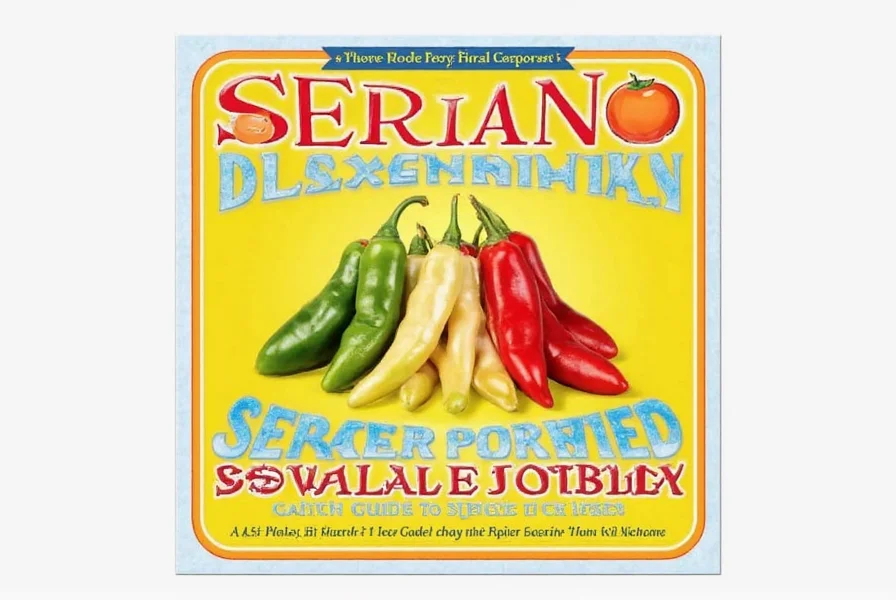
Quick Facts:
- Scientific name: Capsicum annuum
- Origin: Mexico (Puebla and Hidalgo regions)
- Length: 1–2 inches
- Colors: Green, red, orange, brown
The Heat Factor: How Hot Are Serrano Peppers?
If you're curious about the Scoville scale, serrano peppers pack quite a punch compared to their milder siblings. Let's take a closer look:
| Pepper | Scoville Heat Units (SHU) | Common Use |
|---|---|---|
| Serrano | 10,000 – 23,000 SHU | Cooked dishes, salsas, pickling |
| Jalapeño | 2,500 – 8,000 SHU | Tacos, nachos, stuffed peppers |
| Hatch | 1,000 – 8,000 SHU | Grilled, roasted, green chile rellenos |
| Habanero | 100,000 – 350,000 SHU | Hot sauces, Caribbean dishes |
Why the Heat Varies
The heat level of serrano peppers depends on several factors:
- Color: Green peppers are milder; red ones are hotter
- Size: Smaller peppers tend to be spicier
- Growing conditions: Sunlight, water, and soil nutrients affect capsaicin levels
Flavor Profile and Culinary Uses
Beyond the heat, serrano peppers offer a surprisingly complex flavor profile. Unlike the vegetal taste of bell peppers or the earthiness of poblanos, serranos have a crisp, grassy bite with a hint of fruitiness—especially when they ripen into red or orange shades.
Flavor Breakdown:
- Vegetal (green stage)
- Fruity (red/orange stage)
- Grassy, almost herbal note
This unique blend makes them perfect for:
- Homemade salsas
- Stuffed pepper recipes
- Marinades and brines
- Pickled serranos (great on tacos!)
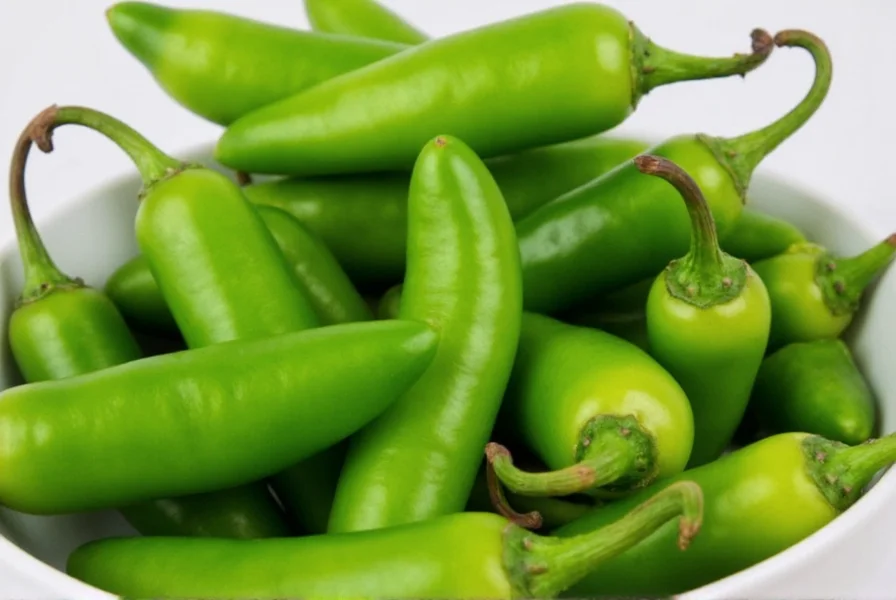
Growing Serrano Peppers at Home
If you've ever thought about growing your own serrano plants, now's the time! These peppers are surprisingly easy to grow indoors or outdoors, provided they get enough sun and warmth.
Basic Growing Tips:
- Start seeds indoors 6–8 weeks before last frost
- Use well-draining potting soil
- Provide 6–8 hours of sunlight daily
- Water regularly but avoid overwatering
- Harvest peppers when firm and fully colored
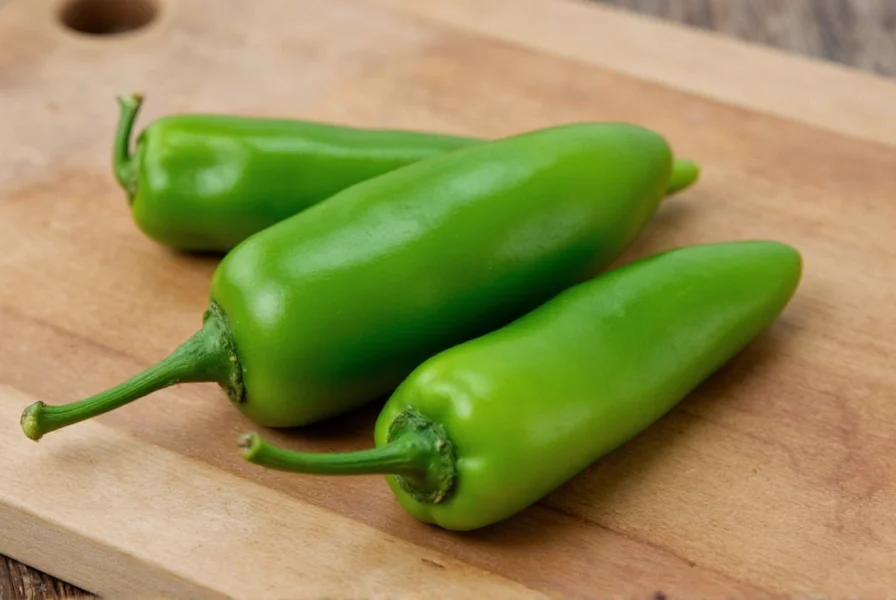
When to Harvest
You can pick serrano peppers at any stage, but wait until they're fully mature if you want the most heat and flavor. The longer they stay on the vine, the richer their color and flavor become.
Buying Guide: Picking the Perfect Serrano
Shopping for serrano peppers can feel overwhelming if you're not sure what to look for. Here's a quick guide to help you find the best ones at the store or market:
What to Look For
| Factor | What to Choose |
|---|---|
| Appearance | Smooth, glossy skin without wrinkles or soft spots |
| Color | Green for mild heat, red/orange for bold flavor |
| Firmness | Firm to the touch; avoid mushy peppers |
Top Products to Consider
- Fresh Whole Serranos
- Best for: Cooking, roasting, stuffing
- Where to buy: Farmers markets, Mexican grocery stores
- Dried Serrano Packets
- Best for: Long-term storage, soups, mole sauces
- Features: Intense flavor, rehydrates easily
- Serrano Hot Sauce
- Best for: Adding instant heat to meals
- Use cases: Tacos, eggs, grilled meats
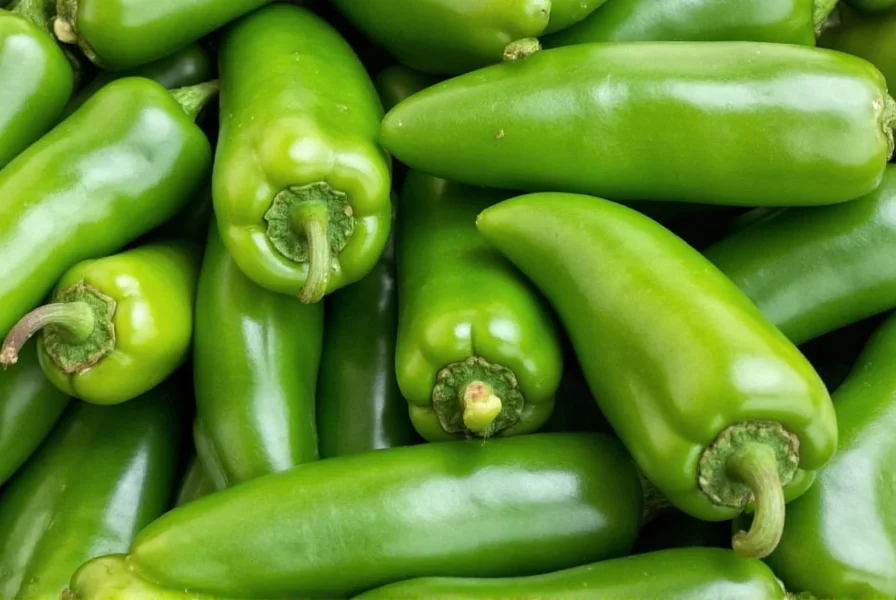
Tasty Recipes Featuring Serrano Peppers
Ready to start cooking? Here are a few delicious ways to use your fresh (or dried) serrano peppers:
1. Serrano Salsa Verde
A tangy, spicy twist on traditional salsa made with tomatillos, lime juice, and roasted serranos. Serve with warm tortilla chips or as a taco topping.
2. Pickled Serrano Relish
This versatile condiment adds heat and crunch to sandwiches, burgers, and even breakfast avocado toast.
3. Serrano-Infused Oil
Perfect for drizzling over pizzas or dipping bread. Simply infuse olive oil with sliced serrano peppers for a week, then strain and store.
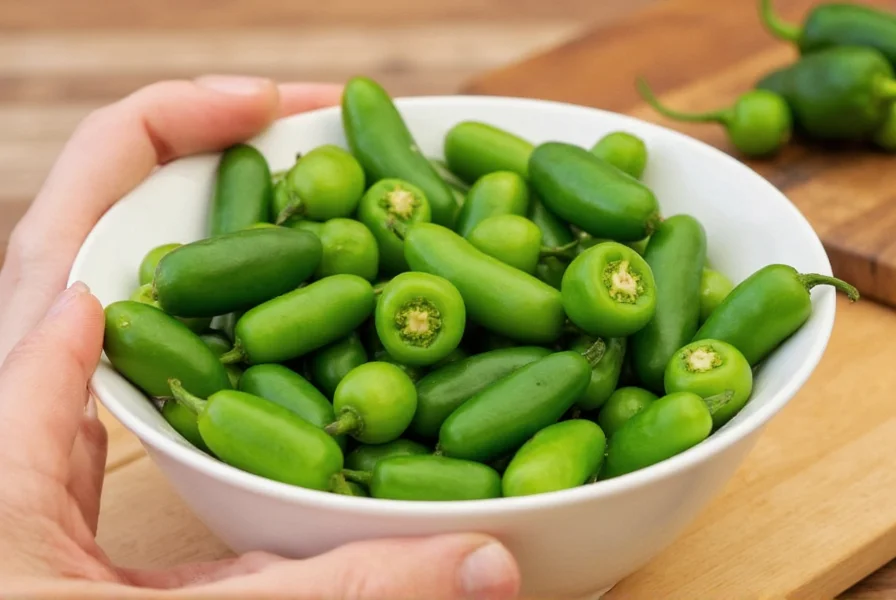
How to Store and Preserve Serranos
Serrano peppers are easy to store and preserve using several methods:
Storage Options:
| Method | Duration | Notes |
|---|---|---|
| Refrigerator (fresh) | Up to 2 weeks | Store in a plastic bag in crisper drawer |
| Freezing | 6–12 months | Wash and freeze whole or chopped |
| Pickling | Several months | Add vinegar, salt, garlic, and spices |
| Drying | 6–12 months | Hang to air dry or use a dehydrator |
Health Benefits You Should Know
Like many chili peppers, serranos are rich in vitamins, antioxidants, and compounds that support overall health:
- Vitamin C: Boosts immunity and skin health
- Vitamin A: Supports eye health and immune function
- Capsaicin: May aid metabolism and reduce inflammation
- Low in calories: Great for weight management
Frequently Asked Questions About Serrano Peppers
Here are answers to common questions about working with serrano peppers:
How do I handle serrano peppers safely without burning my hands?
Always wear gloves when handling serrano peppers, especially when cutting or seeding them. The capsaicin oils can linger on your skin and accidentally transfer to your eyes or other sensitive areas. If you don't have gloves, be sure to wash your hands thoroughly with soap and water (not just rinsing) after handling. Some chefs recommend using a paper towel to handle the peppers directly to avoid skin contact.
Can I substitute serrano peppers for jalapeños in recipes?
Yes, but with caution. Serranos are significantly hotter than jalapeños (2-3 times hotter on the Scoville scale). If substituting serranos for jalapeños, start with half the amount called for and taste as you go. Remember that serranos also have a brighter, grassier flavor profile compared to jalapeños' earthier taste, so the final dish will have slightly different flavor notes.
Why are my homegrown serrano peppers not as hot as store-bought ones?
Pepper heat depends on several factors including growing conditions. Stressors like less water, more sun exposure, and nutrient-deficient soil can increase capsaicin production (and thus heat). Commercial growers sometimes optimize for consistent size and appearance rather than heat. To increase heat in homegrown serranos, try reducing water slightly as peppers mature, ensuring maximum sun exposure, and allowing peppers to fully ripen on the plant.
What's the best way to reduce the heat of serrano peppers in a dish?
To reduce heat, remove the white pith and seeds (where most capsaicin resides). Adding dairy (yogurt, sour cream, cheese), acid (lime juice, vinegar), or sugar can counteract heat in finished dishes. For immediate relief while cooking, add more of the other ingredients to dilute the heat. Note that once capsaicin is cooked into a dish, you can't completely remove the heat, only balance it.
Are serrano pepper seeds edible?
Technically yes, but they're extremely spicy and have a bitter texture. Most recipes recommend removing the seeds and white membrane (placenta) to control heat levels. The seeds themselves don't contain the most capsaicin - that's concentrated in the white pith surrounding the seeds. Many professional chefs discard both seeds and pith for more controlled heat in their dishes.
How can I tell when serrano peppers are fully ripe?
Serranos are typically harvested green but continue to ripen to red, orange, or even brown. Fully ripe serranos will be firm, glossy, and brightly colored. The skin will feel taut and slightly waxy. Ripe serranos (red/orange) are usually hotter and sweeter than green ones. They should detach easily from the stem when gently pulled if fully ripe.
What are some unexpected dishes that work well with serrano peppers?
Beyond traditional Mexican dishes, serranos work wonderfully in: fruit salsas (mango, pineapple), cocktail rims (muddled into lime for margaritas), salad dressings (finely minced in vinaigrettes), chocolate desserts (a pinch in brownies for complexity), and even cocktails (muddled in bloody marys or micheladas). Their bright heat complements sweet, fatty, and creamy elements particularly well.
Final Thoughts on Serrano Peppers
Serrano peppers are a must-have ingredient for anyone who loves bold flavors and a bit of heat. Whether you're tossing them into a quick stir-fry, fermenting them for hot sauce, or simply slicing them onto your tacos, they add depth, spice, and character to your dishes. With proper storage, you can enjoy them all year round—whether fresh, dried, or preserved.
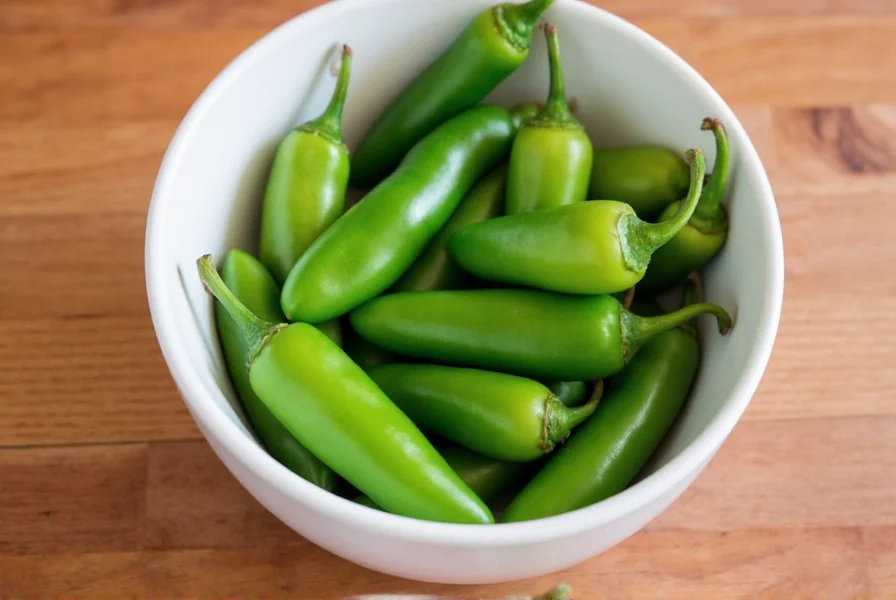
So next time you're at the market, grab a bunch of serranos and let your kitchen sizzle!

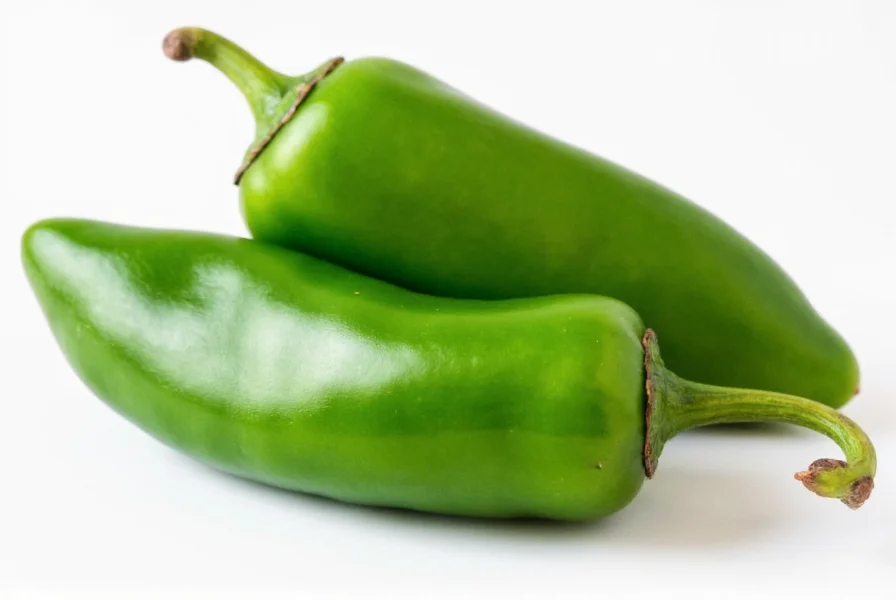









 浙公网安备
33010002000092号
浙公网安备
33010002000092号 浙B2-20120091-4
浙B2-20120091-4